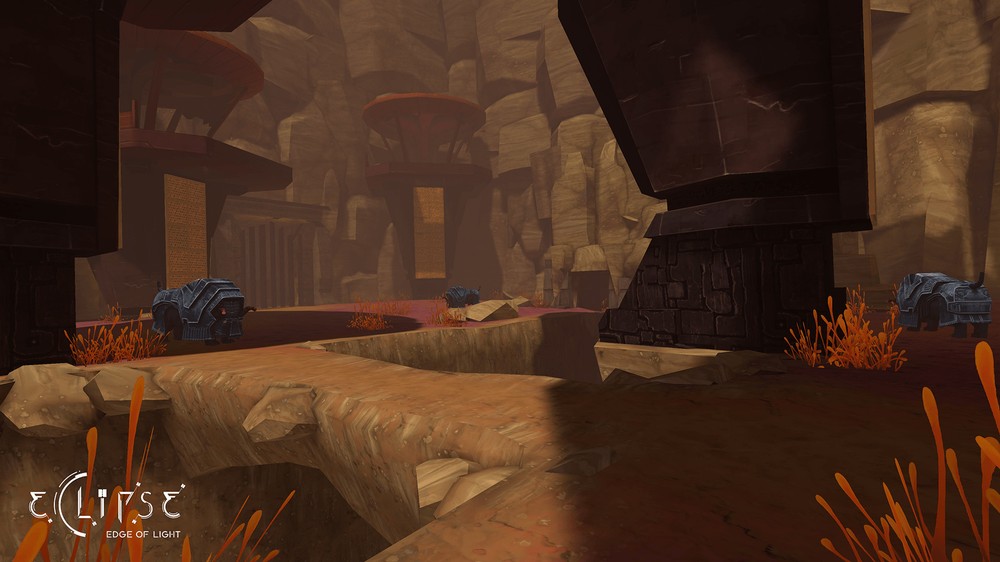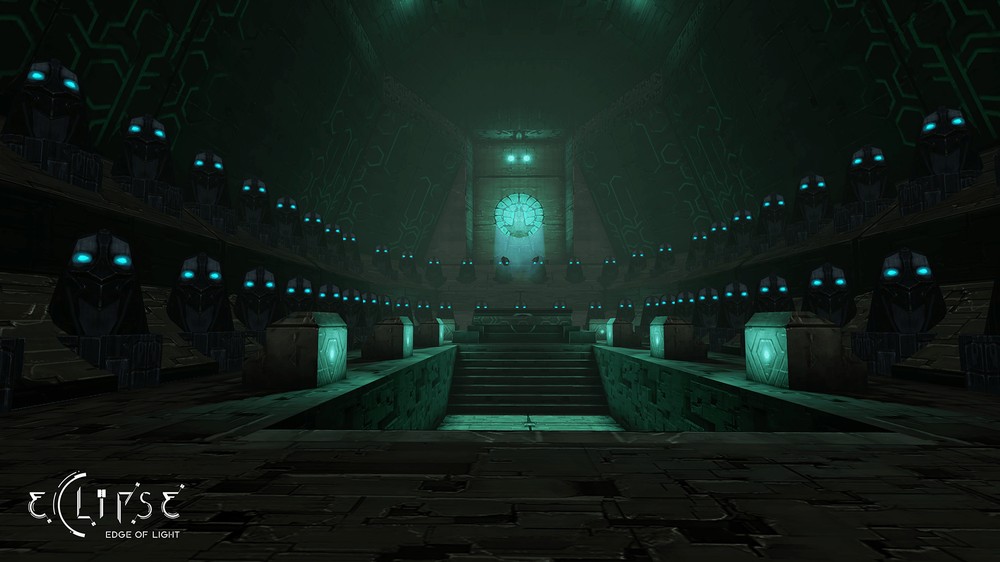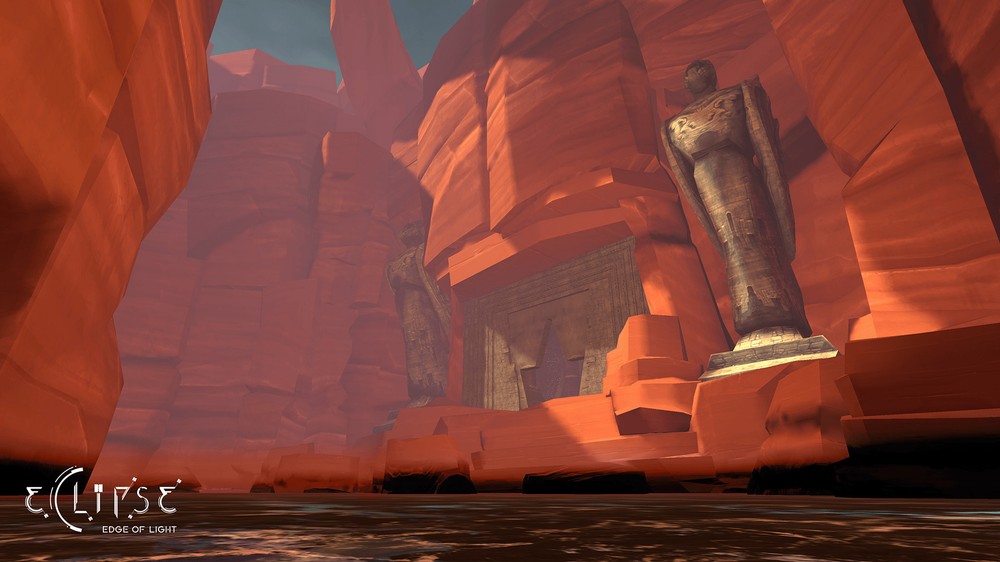One thing that I have been consistently impressed with since I purchased my PSVR headset is the number of fully-fledged gaming experiences that are available to the player. I anticipated the party games, the one-off experiences and the impressive yet forgettable tech demos, but I didn’t expect to be sitting down with a game, playing through it from start to finish and coming away feeling as if I had experienced something to completion. However, Eclipse: Edge of Light is one of the latest in a long line of story-based VR games, and over the course of its narrative it lands you on an alien planet, introduces you to a new religion, and asks you to solve a number of interesting puzzles.
Eclipse was initially released on Google Daydream, where it received rave reviews, and has now been released on PlayStation VR, as well as a number of other VR and non-VR platforms. This is one of the first releases for LA-based White Elk Studios, and while players might now be familiar with the studio itself, some of the staff at White Elk have worked on franchises such as God of War, and that industry experience shines through in Eclipse: Edge of Light from the very beginning. Though the visuals may initially seem a little low-res, you’ll soon find yourself absorbed in the world, smashing pots and ancient vessels, jet-packing across vast gaps, and using the mysterious orb known as the Artifact to make your way through locked doors.
 As I’ve said, the visuals in Eclipse are a little basic, but they never venture into being unattractive, and always present a clear idea of where you’re supposed to go and what you’re supposed to be doing. Rather than lacking in detail, they can instead be accused of lacking in texture, and so the floor you’re walking on or the wall you’re looking at will be just that: a wall or a floor. There’s no fancy embellishment, just a solid representation of where you are. Despite that, the fact that the game presents itself in VR adds a level of immersion that you just can’t find from a regular 2D game, and so you’ll soon find yourself concentrating on where you’re going rather than focusing on where you currently are.
As I’ve said, the visuals in Eclipse are a little basic, but they never venture into being unattractive, and always present a clear idea of where you’re supposed to go and what you’re supposed to be doing. Rather than lacking in detail, they can instead be accused of lacking in texture, and so the floor you’re walking on or the wall you’re looking at will be just that: a wall or a floor. There’s no fancy embellishment, just a solid representation of where you are. Despite that, the fact that the game presents itself in VR adds a level of immersion that you just can’t find from a regular 2D game, and so you’ll soon find yourself concentrating on where you’re going rather than focusing on where you currently are.
Movement is important throughout Eclipse, and though it could be labelled as a form of walking simulator, there’s an involvement in the world that makes that label feel like a little bit of a disservice. Early on in the game you find the Artifact, which is essentially a glowing baseball that you can throw at objects and use to open doors. As you play through the game, you’ll unlock more abilities for the Artifact, but your interaction with it essentially remains the same: throw and recall. Alongside this, there are a large number of objects in your path to scan, and these deliver contextual information for the planet that you’re on and why your journey is important. Scanning these objects requires you to physically move your head and ‘view’ every part, which can add a real sense of scale to some of the larger artifacts.
 Like most VR games, Eclipse: Edge of Light is a fairly short experience, and I managed to complete it over a couple of evenings, with a total time of somewhere between three and four hours. Unfortunately, during that time I encountered a fair few minor visual and performance issues, which would likely be nigh-unnoticeable with a regular 2D game, but are exacerbated by the fact that you’re experiencing them in VR. I don’t often suffer from VR-induced motion sickness, and I was largely ok throughout my playthrough of Eclipse, but there were a couple of instances of stuttering that made my brain (and stomach) do a couple of loops. There were also occasions of tearing on objects and textures that didn’t ruin the experience by making me feel sick, but still took away from the feeling of immersion.
Like most VR games, Eclipse: Edge of Light is a fairly short experience, and I managed to complete it over a couple of evenings, with a total time of somewhere between three and four hours. Unfortunately, during that time I encountered a fair few minor visual and performance issues, which would likely be nigh-unnoticeable with a regular 2D game, but are exacerbated by the fact that you’re experiencing them in VR. I don’t often suffer from VR-induced motion sickness, and I was largely ok throughout my playthrough of Eclipse, but there were a couple of instances of stuttering that made my brain (and stomach) do a couple of loops. There were also occasions of tearing on objects and textures that didn’t ruin the experience by making me feel sick, but still took away from the feeling of immersion.
I came away from Eclipse: Edge of Light with the feeling that I was pleased that I had experienced it, but pretty certain that I wouldn’t go back to play through it again. The story hints at reasons why you would want to play through the experience a second time, but I personally didn’t feel like the mechanics or narrative were strong enough to warrant it, at least at a point so close to my first playthrough. Despite that, though, I would definitely recommend this game to players looking for a story-based VR experience, as (aside from time restrictions) I never once thought of removing my VR headset once I had booted up the game.
Eclipse: Edge of Light is a prime example of how to deliver a narrative experience within a VR title, and though some aspects of it may seem a little basic, the foundations are definitely here, and you’ll soon forget the limited visuals and minimal player input. Eclipse gives me great hope for the future of the VR medium, and I’m definitely interested to see what White Elk Studios will potentially deliver next in VR, especially as we’re approaching a period of increased home hardware capabilities and a better understanding of just what VR can do. If you’re looking for a VR game with a solid narrative, then you could certainly do a lot worse than Eclipse: Edge of Light.













